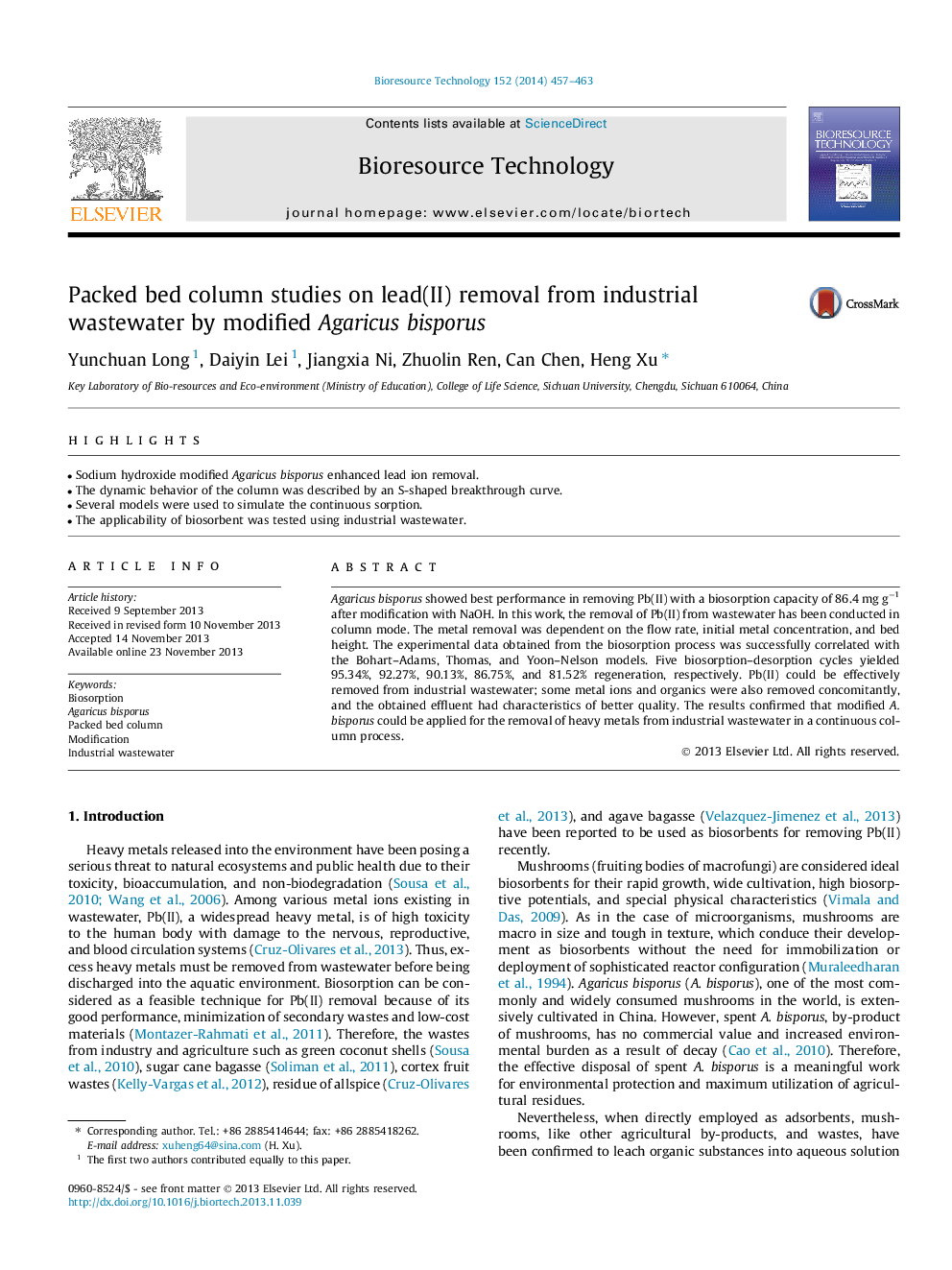| Article ID | Journal | Published Year | Pages | File Type |
|---|---|---|---|---|
| 7079280 | Bioresource Technology | 2014 | 7 Pages |
Abstract
Agaricus bisporus showed best performance in removing Pb(II) with a biosorption capacity of 86.4 mg gâ1 after modification with NaOH. In this work, the removal of Pb(II) from wastewater has been conducted in column mode. The metal removal was dependent on the flow rate, initial metal concentration, and bed height. The experimental data obtained from the biosorption process was successfully correlated with the Bohart-Adams, Thomas, and Yoon-Nelson models. Five biosorption-desorption cycles yielded 95.34%, 92.27%, 90.13%, 86.75%, and 81.52% regeneration, respectively. Pb(II) could be effectively removed from industrial wastewater; some metal ions and organics were also removed concomitantly, and the obtained effluent had characteristics of better quality. The results confirmed that modified A. bisporus could be applied for the removal of heavy metals from industrial wastewater in a continuous column process.
Related Topics
Physical Sciences and Engineering
Chemical Engineering
Process Chemistry and Technology
Authors
Yunchuan Long, Daiyin Lei, Jiangxia Ni, Zhuolin Ren, Can Chen, Heng Xu,
